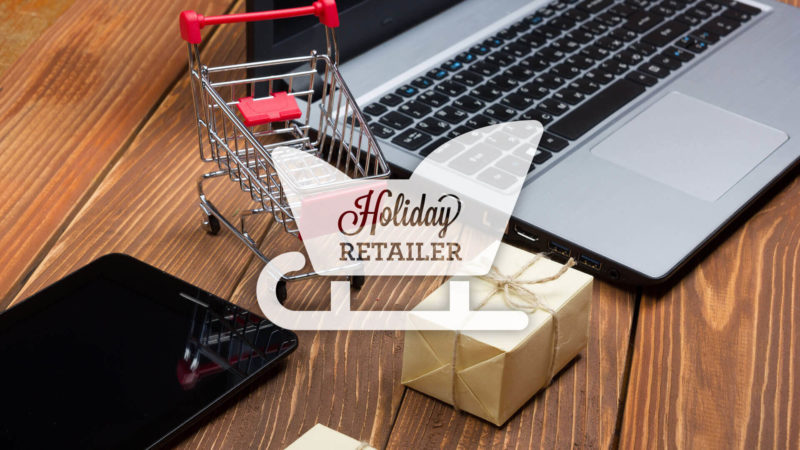Extending the promotional power of packaging: Technology as the new frontier
With the holiday season in full swing, brands need to move beyond traditional packaging. Contributor Davor Sutija discusses how technology can help marketers think outside the box.

Think outside the bottle if you’re a craft brewer or winery, think outside the carton or jug if you’re a laundry detergent maker, and yes, think outside the box if you’re a cereal packager. By utilizing auxiliary items as messaging vehicles, stronger brand cohesion is created, along with a more memorable experience for the consumer — something that brands must keep top of mind with the busy holiday shopping season well underway.
Packaging is not static
It may be counterintuitive to say that packaging shouldn’t sit still when its very purpose is to contain a product on its shelf or display until it’s time to be purchased and used. But with changes in modern consumer behavior, packaging also needs to change with the times. This goes beyond altering the artwork of a package every few years to keep up with which styles and tastes are “in.” Product packaging needs to match consumer trends.
As we’ve previously discussed, consumers prefer in-store interaction with products before they buy them. To survive in today’s competitive retail environment, it’s vital to apply that same principle to packaging. Packaging can no longer be a silent participant in the buying process — it must be actively involved.
Another growing trend in consumer behavior that packaging can help with is the increasing demand for transparency. For example, a recent Hartman Group survey, titled “Sustainability 2017,” found 69 percent of consumers are calling for more visibility into how products are made and companies’ environmental practices.
Simply put, your packaging has to be interactive and show consumers who you are as a company to build credibility with them and, ultimately, influence their purchasing decision.
Is every part being utilized?
Consumers react strongly to brands that deliver unexpected experiences. Think of General Mills cereal boxes that offer a toy within the cereal bag itself. The product marketing ploy extends beyond what fits on the outside of the box to reach children in a unique way — inside the box.
Though it may not be practical or a fit for all companies to use this exact strategy, it’s a good way to start thinking about the multiple “layers” of your product’s packaging. Case in point: A 12-pack box of Coca-Cola is branded, and so are the cans inside that box. Recently, Coke took it one step further by printing names on the cans themselves, allowing for a direct personal connection to be made between the company and the soda lovers seeking out cans with their own name, or the name of a friend or loved one, on it.
This created layered marketing, where the package’s outer shell at purchase is branded, as are the interior wrappers and components consumed, used or discarded by the consumer. In the case of Coke, the layered approach allowed for a delightful surprise for consumers trying to find a can with a particular name.
Even auxiliary items like a bar coaster, wine bottle neck or foil wrapper inside the box can become one of your most impactful branding practices if it’s designed with customer interaction in mind.
Think outside the box with technology
The limited real estate on traditional primary and secondary packaging — not to mention the smaller size of underused packaging elements like caps or coasters — is often a key barrier in marketing and messaging. Not to mention, there’s an argument for simplicity and aesthetics: Make a package too cluttered, and you’ll turn the customer away.
But technology allows these size limits to be surmounted, opening up a new dimension of customer interaction and branding strategy. As a Marketing Sherpa study points out, 59 percent of shoppers still find new brands through in-store browsing. By turning to connected packaging technologies — like NFC (near-field communication) and RFID (radio-frequency identification) — brands can maximize their visibility to make that first impression.
In fact, these types of technologies allow tags to be seamlessly integrated into any packaging that interacts with a consumer’s smartphone. While in-store, these tags can direct consumers to webpages with special promotions and contests or marketing campaigns and videos.
Once the product has been purchased and taken home, these tags can be tapped again to utilize the power of ecommerce and on-the-spot reordering — keeping the customer interaction with the brand on-target. In this regard, the limited marketing real estate of a physical product becomes virtually limitless in the cloud for its digital twin.
Careful thought and planning already goes into the packaging of consumer goods to make them appealing to consumers. By adding technology to bridge the gap between the physical and digital worlds, the power of packaging can rise to new heights. In addition to connecting directly with consumers, brand marketers are able to engage with them throughout the entire customer journey — at point-of-sale, during the consumption phase and at the time of reorder.
Opinions expressed in this article are those of the guest author and not necessarily MarTech. Staff authors are listed here.
Related stories